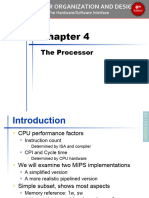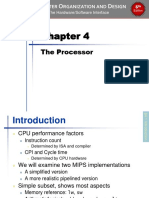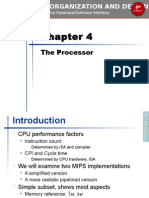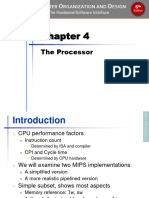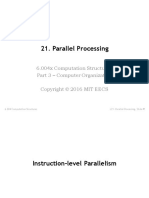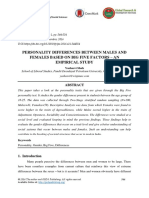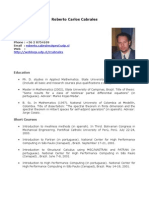0% found this document useful (0 votes)
240 views13 pagesAdvanced Processor Techniques
This document discusses instruction-level parallelism (ILP) and how it can be achieved through deeper pipelines, multiple instruction issue, and static or dynamic multiple issue processor designs. It provides examples of MIPS with static dual issue where instructions are issued in two-instruction packets. The compiler must schedule instructions to avoid hazards either through reordering or inserting NOP instructions. Both static and dynamic multiple issue designs aim to increase parallelism and the instruction execution rate.
Uploaded by
許藝蓁Copyright
© © All Rights Reserved
We take content rights seriously. If you suspect this is your content, claim it here.
Available Formats
Download as PDF, TXT or read online on Scribd
0% found this document useful (0 votes)
240 views13 pagesAdvanced Processor Techniques
This document discusses instruction-level parallelism (ILP) and how it can be achieved through deeper pipelines, multiple instruction issue, and static or dynamic multiple issue processor designs. It provides examples of MIPS with static dual issue where instructions are issued in two-instruction packets. The compiler must schedule instructions to avoid hazards either through reordering or inserting NOP instructions. Both static and dynamic multiple issue designs aim to increase parallelism and the instruction execution rate.
Uploaded by
許藝蓁Copyright
© © All Rights Reserved
We take content rights seriously. If you suspect this is your content, claim it here.
Available Formats
Download as PDF, TXT or read online on Scribd
/ 13


